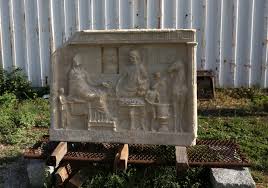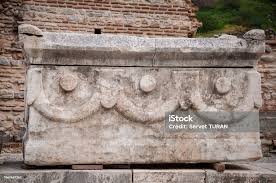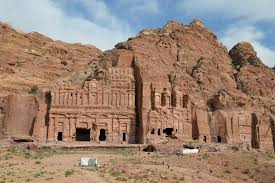Thanatology Exam 1
1/74
Earn XP
Description and Tags
Thanatology Exam 1 / Pittsburgh Institute of Mortuary Science / Exam Date: 10/11/24
Name | Mastery | Learn | Test | Matching | Spaced |
|---|
No study sessions yet.
75 Terms
Undertaker
Original term for mortician
Those whose occupation included responsibility to organize and facilitate funeral activities
Used by some for the term funeral director
Sociology
Examines humans social interactions and social groups
“Social groups” did it first, traditions
Effects on funeral practices and disposition
Culture
Shared rules/ideas/beliefs by society on living and dying
Enculturation (socialization)
The lifelong method by which social values are internalized and learned
Direct learning
Deliberate instruction and formal learning
Indirect learning
Observation and informal learning
Innovation
Process
Introducing a new idea or object to a culture
Through discovery or invention
Customs
Social behavior as dictated by traditions of the people
Culture helps shape _______ (6 answers)
Norms
Mores (must-behavior)
Taboos
Folkways
Laws
Rules
Ethnicity
Culture heritage or identity of a group
Based on factors such as language or country of origin
Subculture
Smaller identifiable culture
Subdivision
Unique traits to itself
Cultural universalism
Common traits or patterns found in all cultures
Cultural relativism
The emotional attitude that all cultures are equal and pertinent
Culture shock
Feelings of disorientation, uncertainty and even fear that people experience when they encounter unfamiliar cultural practices
Ethnocentrism
Emotional attitude
One’s own race, nation, group, or culture is superior to all others
Humanistic funeral rite
A funeral rite that is devoid of any religious connotation
Adaptive funeral rite
Adjusted to the needs and wants of those directly involved
Pagan culture
Follows a polytheistic religion
The Ancient Egyptians’ death beliefs
Judgment
Soul
Up to 42 gods judge soul
After judgment
Good: the “Field of Reeds”
Mirrored mortal life
Reunite bodily elements
Bad: eternal misery/punishment
Osiris (Ancient Egyptians)
God of the underworld/dead
Judge of the dead
“Book of the dead” (Ancient Egyptians)
Directions to underworld
Ra (Ancient Egyptians)
God of the Sun
Sun=center of universe
Anubis (Ancient Egyptians)
God of embalming
Human form
Head: jackal
Ancient Egyptian Priests were modeled after ___________
The gods
Soul journey (Ancient Egyptians)
3000 year
Around the sun
Through the underworld
Need for embalming (Ancient Egyptians)
Needed to last 3000 years
Reunite bodily elements
Physical afterlife
Roles of a tomb (Ancient Egyptians)
Protect the body
Sacrifices/offerings for the trip and afterlife
Visions of gods (Ancient Egyptians)
Skin of gold
Bones of silver
Hair of limestone
Often animal heads
Ker-heb (Ancient Egyptians)
Priest
Supervisor of embalming
Modeled after Anubis
Mummification of upper class (Ancient Egyptians)
Evisceration (removing organs)
Heart stayed with body
Canopic jars
Wash cavities and body
Pack cavity with spices, resins, & natron (salt)
Wrap in linen
Canopic jars
Made of alabaster, limestone, basalt, clay
Store viscera of the deceased
Middle class mummifcation (Ancient Egyptians)
Cedar oil into visceral cavities
No evisceration
Natron
Lower class mummication (Ancient Egyptians)
Chemical submersion for 70 days
Sand burial
Sarcophagus (Ancient Egyptians)
Early egyptian coffins:
Stone cut from a single mass
Heavy for protection
Anthropoid
Modern uses:
Massive copper and bronze caskets
Etymology of sarcophagus
Sarco: flesh
Phagus: eater
Anthropoid
Human-shaped
Ancient Greeks’ death beliefs
Disembodied/shadowy afterlife
Early belief
Bodily existence under the earth (Underworld)
Later belief
Shadowy existence of disembodied souls
Judgment
Good
Elysian fields
Greek heaven
Cult of Dionysius
Bad
Suffering
Forgotten
Wander in the land of Hades
River of Styx (Ancient Greeks)
Cross River of Styx to reach judgement
“Cross the River of Styx, pass the three headed dog and you’ll be in the underworld”
Give money to Charon
Honey cake for Cerberus
Preparation (Ancient Greeks)
Family members
Female
Or next of kin choosing
Set features
Warm bath
Dressed
Repose
Anoint
Oil, perfumes, and spices
For Ancient Greeks, embalming was __________
Infrequent
Time of repose (Ancient Greeks)
“Seeing is believing”
Watch body to see if it starts decomposing to make sure they are actually dead
Clothing of deceased and mourners (Ancient Greeks)
Deceased: white
Mourners: black
Reasons flowers were woven into wreaths (Ancient Greeks)
Warning
Hung outside the door
Symbolism
No beginning or end, memory forever
Funeral feast (Ancient Greeks)
End to the fast of the bereaved
Ancient Greek tradition
Undertones of celebration
Middle ages
Feast to welcome new heir to their new estate
Reasoning for sacrifices/offerings (Ancient Greeks)
Eternal memory
Serve the dead
Not to have with them in afterlife
What was sacrificed? (Ancient Greeks)
Horses and slaves
Foods and wines
Personal items
Chariots
Professional mourners (Ancient Greeks)
Fear that the dead might be jealous
Many ancient cultures
Hired persons (often women)
Insure adequate display of emotion
Shriek & tear their hair and garments
Disposition (Ancient Greeks)
Cremations becomes popular
Germanic (vikings) influence
Cremation to set soul free
Burial never obsolete
Some (or any) form of disposition was most respectful
Coffins (Ancient Greeks)
Clay (fired): earliest
Wood: cypress
Stone: most popular
Heavy for protection
Stelae tombs
Shaft/upright

Kiones tombs
Column

Trapazae tombs
Square cut
Above ground

Naidia tombs
Temple like

Libitina (ancient romans)
Roman goddess of corpses and funerals
Libitinarius (ancient romans)
Head undertaker
Secular role model for FD
Conducted business at the temple of Libitine
Burial and cremation practices (ancient romans)
Republic times: burial and cremation
Turn to Caesar's empire
Constantine empire: back to burial
Edict of Toleration (ancient romans)
Religious freedom if you paid your taxes to Rome
Declaration made by government
Religious members shall not suffer religious persecution
Do not persecute for religious practice
Praeco (ancient romans)
Aka Crier
Summoned participants to a public funeral
Let others know the news
Obituaries
Funeralis (ancient romans)
Latin etymology
“Torchlit procession”
Common person: before dawn
High status: during day
Funeral masks (ancient romans)
Link to spiritual predeceased
Wear masks of past dead ones to other funerals
Sheol (ancient hebrews)
“Shadowy afterlife”
Soul lived
Connection of soul to living world
The soul would pass… (ancient hebrews)
Righteous person
State of blessing
Wicked person
State of punishment
Both would be raised for a day of final judgment
Embalming and cremation (ancient hebrews)
Embalming = infrequent
OT records of embalming
Jacob and Joseph
Cremation = desecration
Bond of soul and body
Postmortem punishment
Rare circumstances during early plagues
Wake (Hebrew origin)
Sit with the deceased
Precaution against premature burial
Vigil-like during middle ages
Clothing that indicated mourning (ancient hebrews)
Nakedness/minimal dress
Bare feet
Heads draped
Physical displays of mourning (ancient hebrews)
Cutting flesh
Cutting tufts of hair
Shaving beards
Throwing onto each and sprinkling of dust
Disposition (ancient hebrews)
No coffin: simplistic
Buried family together
Remain together in afterlife
Grave = symbol of relief and safety
Fear of unburied and unvisited
Infrequent punishment
Cremation or no burial
Ancient hebrew tombs (ancient hebrews)
Outskirts of cities
Simple, without inscription
Poor
In the ground
Wealthy
Cave, or rock formation
Cannon law (ecclesiastical) burial requirements (ancient christians)
Repose with lights beside
Blessed in holy water and incense
Cross on chest or hands crossed
Burial in consecrated (blessed) ground
Dignity to all deceased, even the poor
Bury the dead
One of the seven corporal works of mercy
At conclusion of the procession (ancient christians)
Food and money were given to the poor
“In lieu of flowers…”
Designated days when memorial masses were to be held
Farewell prayers were given
Catacombs (ancient christians)
Originated in ancient Rome as excavated cemeteries cut out of soft rock for the tombs of wealthy Christians
Became a place for religious rites to avoid persecution
Fossores (ancient christians)
Gravediggers, sextons, and cemeterians
In the catacombs during the period of early Christianity
Approx 300-450 AD
Constantine (ancient christians)
Welcomes Christianity
Burial and worship move within city limits
Constantine’s precedent
Importance of burial with martyrs and saints
Burial in churches
Outlaws cremations
Ancient scandinavians (vikings) death practices
Practice cremation
As protection from the dead
Aid in freeing the spirit of the dead
Influence on modern customs (middle ages)
Mound burial (Ancient scandinavians (vikings))
Ancient viking custom
Deceased was placed in his boat
With items necessary for the spirit to maintain the position held on earth
Cremated
Prye then covered with earth